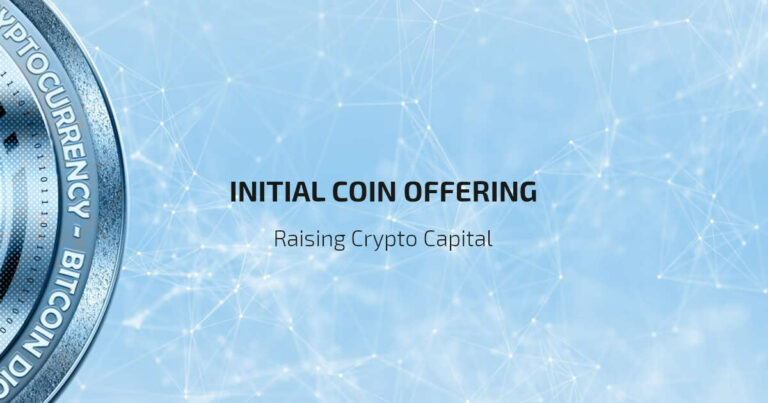Initial Coin Offering (ICO) Boom: Imagine striking oil in your backyard—that rush, that chance at wealth. That’s the digital age gold rush, and it’s changing the face of funding. Dive into the heart of this phenomenon as we dissect how new tokens hit the market and how, unlike traditional company shares, these offerings pave new paths for investment. Stick with me—I’ll be your guide through this wild, lucrative realm. Let’s unpack the ICO boom and see how it might be your ticket to the front lines of investment’s future.
Understanding the ICO Phenomenon: A Primer
The Basics of Initial Coin Offerings (ICOs)
Imagine a world where money flows like water on the internet. This is where ICOs shine. They are a new way for startups to raise cash quick without much trouble. They create their own digital coins or tokens. Then they sell these tokens to you, the public, to get the money they need to grow.
Think of it like a big online bake sale, but with digital treats. These treats, or tokens, can gain value over time. The hope is they get more valuable as the company grows. This process helps new ideas bloom fast in the exciting world of crypto.
Comparing ICOs to Traditional Funding Mechanisms: ICO vs IPO
You might wonder, “How is an ICO different from an IPO?” Well, let’s break it down. An IPO, or Initial Public Offering, is when a company sells shares. It’s all very formal and tough to do. There are many rules and it can cost a lot.
On the other hand, an ICO is like the wild west. It’s new, less rules, and moves fast. Anyone with internet can join in. No need for big banks or stock markets. But with this freedom comes risks. There’s less safety if things go bad.
So, when you hear about ICOs, think of it as a fresh road to money for daring new ideas. And as we make sense of this digital gold rush, it’s all about staying smart and keeping your eyes open.
Navigating the ICO Landscape: Legal and Regulatory Considerations
A Token Offering Guide: ICO Regulations and Compliance
Jumping into ICOs can feel like finding treasure. To launch an ICO, you first need a solid plan. Know this: ICO rules change around the world. Always check the law where you live. Learn from ICO success stories but don’t follow blindly—what worked once may not work again. Why? ICOs can be like the wild west. Some are gold, some are dust.
Many ask, “What about digital token sales?” Digital tokens can be tricky. They are not all the same. Some are utilities; they give users access to services. Others are securities; they are investments like stocks. Each has its own rules. To start, think about your token. What does it do? That’s big for knowing your laws.
“Why is the whitepaper important for ICOs?” The whitepaper is your map. It tells others where you plan to go. It must be clear, honest, and full. It says what your token will do, lays out your plans, and covers your token’s details. Think of it like a promise – one you must keep.
Preventing ICO Scams: Importance of Due Diligence and Legal Advice
ICO scams are out there. They can hide well. But you can spot them. How? Research is key. Know your project inside out. “How to do ICO due diligence?” Check the team’s past, the project’s tech, and their promises. See if anything feels off. If so, dig deeper. Ask for expert eyes on it too. ICO legal advice is golden. Lawyers know the land well. They see risks you may miss.
And then comes your hard work. “How to launch an ICO?” It’s not just having an idea. You must build it, step by step. Have a checklist: plan your funding, get your tech right, build a strong team. Share your idea, get people on board. People must believe in you to give you their trust and their cash.
“ICO vs IPO – what’s the difference?” Simple. IPOs are for stocks, and companies must be solid to have one. ICOs can be for any blockchain startup. They gather funding faster, but there’s less checking on them. So, ICOs can be a leap of faith.
Lastly, there’s more to do, even after funding. Use ICO marketing tactics smartly. Think long-term, build for the future. Create an ICO community. They’re your rock. They’ll stick with you, even when times are hard. Remember, ICOs are not just about raising cash. It’s also about sparking change. It’s your shot to make a mark in the crypto world.
Crafting a Successful ICO Strategy
Essential Elements of an ICO: Whitepaper and Smart Contracts
Let’s talk about making your ICO a big hit. First off, you need a killer whitepaper. This is a doc that tells everyone what your blockchain project is all about. It’s like a pitch that explains your vision, how your token works, and why people should care. Without a great whitepaper, folks might not take your digital token sale seriously.
Smart contracts are also super important. These are like rules that live on the blockchain and make sure that the token sale is fair. They handle the buying, selling, and trading of your token. Think of them as robot judges that always follow the rules.
Now, for smart contracts, understanding them is key. They’re bits of code that do what they say, no matter what. If you set up your smart contract right, it helps build trust. People know they’ll get their tokens, and you’ll get your funding. That’s a win-win.
Marketing and Community Engagement: Building Hype and Trust
So, you got your whitepaper and smart contracts. What’s next? You’ve got to get the word out! Marketing is how you shout from the rooftops about your ICO. Use social media, press releases, and all that good stuff. Tell stories that hook people in. The hype is like fuel for your ICO boom.
Building a community is just as huge. You want a group of fans that backs you up. They chat about your project and share the news. Find these people by going to where they hang out online. Talk with them and show them you’re a real person, not just out for their cash.
When you keep your promises and answer questions fast, trust grows. People talk, and their friends listen. Soon, you have a team of helpers spreading the word about your ICO.
That’s your guide on how to launch a hit ICO. Stick to these steps, and you’re on your way. Just remember: a strong plan and real talk can take you far.
Participating in ICOs: What Investors Should Know
Assessing ICO Risks and Rewards: Investment Strategies and Tokenomics
When you put money into ICOs, you dive into a world where big wins are possible. Yet, risks lurk too. Know the game before you play it. Start by learning all about the ICO. This means checking the project details, the team, and their goals. Believe me, a strong idea and a passionate team count a lot.
Ask yourself, what does the token really do? Does it let you use a service? Or does it give you a stake in the company? We call this ‘tokenomics’. It’s how the token works and makes value. Good tokenomics can lead to big rewards in your pocket.
Now, an ICO can bring better money to a project than normal ways of getting funded. And for you, the investor, ICOs can mean getting in early on the next big crypto hit. With an ICO, the money you put in helps new blockchain ideas grow. And as they grow, your investment can too. Just like planting a seed and watching it bloom.
An ICO is not the same as buying stocks. There’s no guarantee you’ll make money. But if you get smart about it, you can work this out to your benefit. Here’s a tip: look at past ICO success stories. They show what works and what doesn’t. Follow their lead, and you might just find your own path to success.
Before you join in, have a plan. Know how much cash you’re alright with risking. And never forget the golden rule: never invest more than you can afford to lose. Money in ICOs is like a ride on a fast bike—thrilling but with bumps along the way.
Post-ICO Terrain: Token Liquidity and Investor Relations
Once the ICO ends, the real work starts. If you’ve got your tokens, what’s next? You need to think about ‘token liquidity’. That’s just a fancy way of saying ‘how easy is it to sell your tokens?’ If you can’t sell them, they’re not much use to you.
Stick close to how the ICO team keeps everyone up to date. Good investor relations mean they tell you what’s happening—clear and straight. If a team goes quiet, that’s a red flag. Stay away from the ICO if that’s what’s going down.
As an investor, you want your ICO to get on the big token sale platforms. These places are where everyone buys and sells tokens. If your ICO hits one of these, it could mean your tokens are ready to soar. It’s all about being able to sell them when you want. That’s the type of freedom you want as an investor.
Lastly, keep an eye on the roadmap. That’s the plan for how the project will move forward. It tells you what to expect and when. If the ICO team follows it, that’s a good sign. It means they keep their word, and your investment has a fighting chance.
So, to sum it up: know what you’re getting into, make a plan, and stay informed. Simple, right? Keep those three things in mind, and you’re set to jump into the digital gold rush of ICOs.
We’ve covered a lot about ICOs, from their basics to smart strategies. We’ve seen how they differ from traditional funding like IPOs. We know laws matter a lot, and being smart helps avoid scams. It’s key to have a good whitepaper and marketing plan. Investors should weigh risks and rewards and think about what happens after the ICO.
In closing, ICOs are exciting but complex. Go in with your eyes open. Know the game and play it safe. Remember, knowledge is your best ally in this fast-paced world of ICOs. Stay informed, stay cautious, and good luck!
Q&A :
What triggered the Initial Coin Offering (ICO) boom?
The ICO boom was primarily triggered by the rise of blockchain technology and the success of various cryptocurrencies, notably Ethereum. Enthusiast investors looking for the next big opportunity and startups seeking funding without the complexities of traditional venture capital or the regulations of securities law spurred the frenzy. This innovative fundraising method allowed the public to invest in new blockchain projects by purchasing tokens early, often with the hope of substantial returns as the projects took off.
How do Initial Coin Offerings differ from traditional fundraising methods?
ICOs represent a significant departure from traditional fundraising methods such as venture capital investments, bank loans, or stock market IPOs. They operate in the largely unregulated cryptocurrency market, which allows startups to raise capital directly from investors by issuing digital tokens or coins. Unlike IPOs, which offer investors a share in the ownership of a company, ICO tokens do not always confer ownership stakes. Instead, they often provide access to the project’s platform or utility within its ecosystem.
Are Initial Coin Offerings legal and regulated?
The legal status and regulation of ICOs can vary greatly from one country to another. Some countries, like the United States, often treat ICOs as securities offerings, which means they are subject to strict regulations and must comply with the laws governed by the Securities and Exchange Commission (SEC). In contrast, other countries may have less stringent rules or might not have a clear regulatory stance on ICOs. Potential investors and startups issuing ICOs should always seek legal advice to ensure compliance with the relevant laws in their jurisdiction.
What are the risks and rewards associated with investing in ICOs?
Investing in ICOs carries a high level of risk, alongside the potential for high rewards. The risks include the possibility of fraud due to less regulatory oversight, the volatility of the cryptocurrency markets, and the chance that the project behind the ICO might not succeed. However, the rewards can be significant if the project behind the ICO proves to be successful and the value of the tokens appreciates. This speculative nature of ICOs attracts many investors hoping for high returns.
How can an investor evaluate the potential of an ICO?
Evaluating the potential of an ICO requires careful due diligence. Investors should examine the project’s white paper, the experience and credibility of the team behind the project, the tokenomics, the level of community and developer support, and the roadmap for product development. It’s also essential to look at the legal framework of the ICO and the rights that the token grants its holders. Always be cautious and consider the project’s transparency and whether it has undergone security audits or any third-party verifications.




RELATED POSTS
Blockchain in Education: Unlocking Cost-Saving Strategies for Students and Institutions
Educational cost reduction in schools...
The Benefits of Conducting Blockchain Audits for Secure Transactions
Gain transparency and trust with...
Ethereum Launch Unveiled: What’s New in the World of Crypto?
Discover the Launch of Ethereum...
Exploring The Different Types Of Consensus Mechanisms In Blockchain
Explore the Landscape of Blockchain...
Unveiling the Blockchain Explorer: Your Ultimate Guide to Crypto Navigation
What is a Blockchain Explorer?...
Can you mine Dogecoin? – Exploring the Mechanics behind it
Can you mine Dogecoin? This...
Routing Attacks on Blockchain Networks: Defending Your Digital Fort Knox
Understanding the Threat: How Routing...
PeckS Airdrop – Strategy to Receive $PeckS Airdrop
Participating in the PeckS Airdrop...
Exploring the Bitcoin Halving Cycle – Future and Price Predictions
Exploring the Bitcoin Halving Cycle...
Unlocking the Secrets: Role Of Cryptography In Blockchain Security
Reinforcing Blockchain Security with Cryptographic...
Recent Advances in Blockchain Research: Unveiling Future Tech Marvels
Recent advances in blockchain research:...
Advantages of Blockchain: Unpacking the Future of Secure Transactions
Enhancing security and trust in...
What is the current market price of Bitcoin? Insights into today’s fluctuating values
What is the current market...
Rainbow Airdrop – A-Z Guide to Receiving Tokens
Rainbow Airdrop is an exciting...
Blockchain Security Audits: What’s Under the Microscope?
What do Blockchain Security Audits...
Wewe Airdrop – Opportunities and Investment Potential in the Blockchain World
The Wewe airdrop is not...